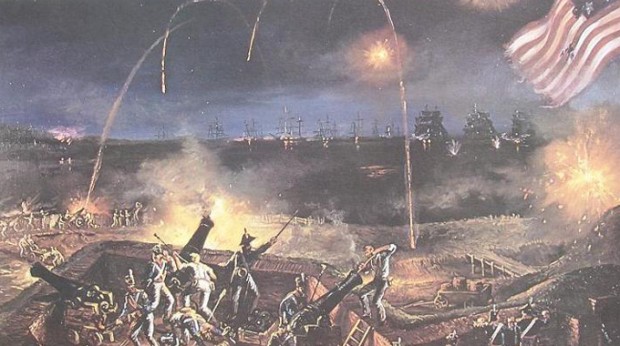Museum To Host War Of 1812 Conference
 Commemorating the 200th Anniversary of the Anglo-American War of 1812, an upcoming conference will examine Bermuda’s vital role during this conflict.
Commemorating the 200th Anniversary of the Anglo-American War of 1812, an upcoming conference will examine Bermuda’s vital role during this conflict.
The international Naval Dockyards Society and the National Museum of Bermuda are jointly hosting the conference — titled “Bermuda Dockyard and the War of 1812″ –from Thursday, June 7 until Tuesday, June 12
Bermuda became the Royal Navy’s warm water North Atlantic base in the 1790s, supporting trade routes and colonies after Britain lost control of its American colonies and ports during the American War of Independence.
Following the French and Napoleonic wars, persisting tensions with America and France escalated into maritime trade disagreements and ultimately full-scale naval conflict.
During the War of 1812 between Great Britain and the United States, the Royal Navy’s “North America Station” in Bermuda was the staging area for the British attack on Washington and Baltimore.
It was in Bermuda, in the summer of 1814, that the British naval fleet was amassed with 5,000 army troops and Royal Marines and then set sail to invade the United States.
Reaching the Chesapeake Bay in Maryland on August 11, the British forces routed the disorganised American army at the Battle of Bladensburg and then marched into Washington, DC, burning down the White House, Capitol Building, and Library of Congress, the only time in American history since the Revolutionary War that a US city was occupied by an invading army.
As Baltimore historian James G. Howes has written: “British forces then sailed up the Patapsco River in a two-pronged naval and land attack on Baltimore, spearheaded by the British army and marines who came ashore east of this major American seaport near Sparrows Point on September 12, advancing as far as present-day Patterson Park in Baltimore.
“There they encountered a large force of 10,000 Americans behind hastily-built fortifications. While the British forces engaged the determined American defenders on land for two days, British warships simultaneously drew closer to Fort McHenry, strategically located at Baltimore’s harbor entrance.”
Beginning on the morning of Tuesday the 13th, the Royal Navy warships unleashed a heavy 24-hour bombardment by cannons and rocket batteries.
“All through the day and rainy night, the defenders of Baltimore withstood these land forces and the naval attack on Fort McHenry, knowing that surrender meant the same fate for Baltimore as the capital had suffered,” Mr. Howes continued.
“As the morning of the 14th dawned and the guns firing on Fort McHenry fell silent, a Baltimore lawyer named Francis Scott Key, held prisoner on a British ship eight miles away, anxiously peered through a spyglass at the embattled fort.
“Seeing the large American flag still flying above Fort McHenry’s ramparts, he knew the besieged gallant defenders had withstood the British assault and Baltimore was saved.”
Painting Of The British Assault On Fort McHenry
So inspired by the sight was Francis Scott Key, as he gazed at the Stars and Stripes, that he began to pen some verses.
“Oh, say can you see, by the dawn’s early light,
What so proudly we hailed at the twilight’s last gleaming?
Whose broad stripes and bright stars, through the perilous fight,
O’er the ramparts we watched, were so gallantly streaming?
And the rockets’ red glare, the bombs bursting in air,
Gave proof through the night that our flag was still there.
O say, does that star-spangled banner yet wave
O’er the land of the free and the home of the brave?”
Published shortly afterwards in the Baltimore American newspaper, Key’s stirring poem, written on a British vessel from Bermuda in Baltimore Harbor on September 14, 1814, would become the United States’ National Anthem, “The Star Spangled Banner”.
The dockyard and military defences developed at Bermuda during this intense period survive largely intact today and arguably merit World Heritage status.
The National Museum of Bermuda and Naval Dockyards Society anticipate that these monuments and the Atlantic context of the War of 1812 will inspire new histories and connections during the conference.
The international conference on the theme of Bermuda’s Dockyard and the War of 1812 will be enhanced by Bermuda heritage tours, enriched by the expertise of National Museum of Bermuda executive director Dr. Edward Harris and other local heritage professionals and tourism ambassadors.


